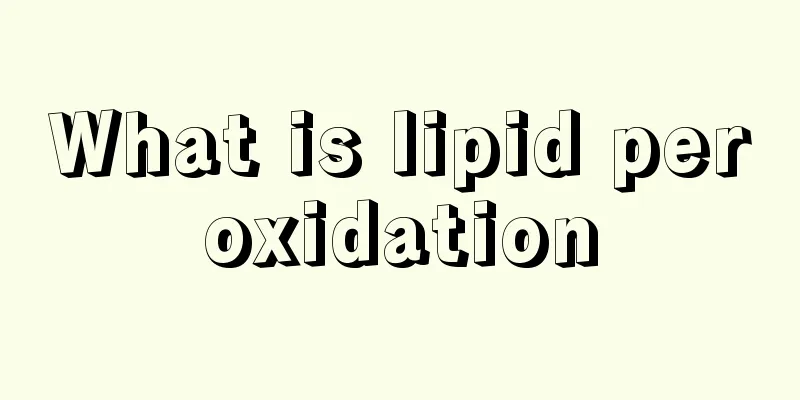What is lipid peroxidation

|
Lipid peroxidation is actually a product of the reaction between oxygen free radicals and polyunsaturated fatty acids. It is widely used in clinical practice. It has a great reaction to the active stage of chronic hepatitis, the decompensated stage of cirrhosis, liver fat, drug-induced liver injury, etc. However, we must also pay attention to its effects on the human body, which may harm the health of the body and damage cells. 1. Introduction Lipid peroxides are the products of the reaction between oxygen free radicals and polyunsaturated fatty acids. Under normal circumstances, the LPO content is extremely low, but in pathological conditions, the enhanced lipid peroxidation reaction can lead to an increase in LPO. An increase in LPO can cause various damages to the structure and function of cells and cell membranes. Lipid peroxides are peroxides formed by the action of unsaturated fatty acids through free radicals. Lipid peroxides and oxygen free radicals can destroy biological membranes, RNA and DNA. They are related to indicators such as superoxide dismutase and oxygen free radicals and aging. They can inhibit immune function and are related to tumors. They are related to the production of certain denatured proteins and can enhance platelet aggregation. 2. Clinical Significance of Lipid Peroxides Active chronic hepatitis, decompensated cirrhosis, fatty liver, drug-induced liver damage, alcoholic liver disease. 3. Hazards of lipid peroxides (1) Lipid peroxides can react with almost any substance in food, reducing the quality of the food. Example: The reaction of lipid peroxides and proteins can reduce protein solubility (protein cross-linking), change color (browning), and reduce nutritional value (loss of essential amino acids). (2) Hydrogen peroxide can react with almost all molecules or cells in the human body, destroying DNA and cell structure. If the -NH2 in the enzyme molecule undergoes the aforementioned cross-linking reaction with propylene glycol, it will lose its activity. After proteins become cross-linked, they lose their biological activity. After being engulfed by lysosomes, these damaged cellular components cannot be digested by hydrolases, and accumulate in the body, causing age spots. |
>>: Can the big three positive turn negative
Recommend
Is it better to do CT or enhanced CT to confirm liver cancer? 3 other liver cancer examination items
I believe many of you have heard of CT scans, and...
Which type of nasopharyngeal carcinoma is most likely to recur
Once nasopharyngeal cancer patients find recurren...
Take a look at the shocking Chinese version of "Gastric Cancer Land
The high incidence of gastric cancer is due to en...
What methods can be used to care for sensitive skin?
Skin problems are of great concern to women, beca...
There are many insect bites on my body
Everyone's skin condition is different. Some ...
What should I do if the food in the refrigerator smells?
The refrigerator is filled with all kinds of food...
Can I take a hot spring bath after a caesarean section?
Patients who have undergone cesarean section must...
Where should the clock be hung at home? Feng Shui is very important in the home
Feng Shui is very important in the home. Good Fen...
Is it normal for women to have abundant pubic hair?
Whether male or female, pubic hair will grow afte...
Why does liquor have no shelf life
Many people are confused about the fact that liqu...
Left frontal lobe glioma
There is a type of tumor that grows in the brain,...
Can adults use the children's fever-reducing patch?
Colds and fevers are common diseases. If the feve...
Reasons why pimples appear on the forehead
Many people have experienced acne on their faces,...
Can epilepsy symptoms be cured?
People's living standards are constantly impr...
What causes back pain? Be careful of this disease
Many people often feel severe back pain in normal...









